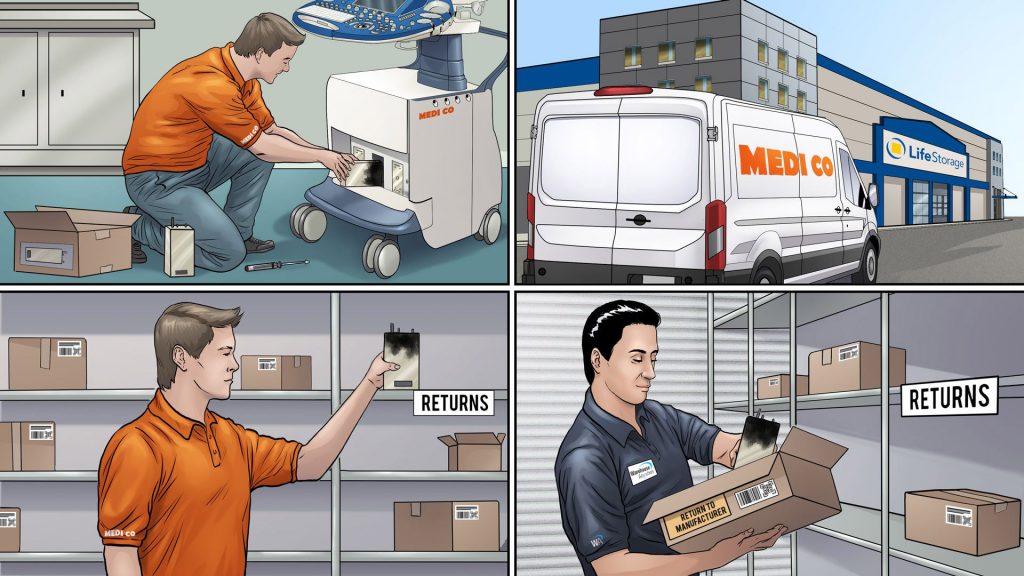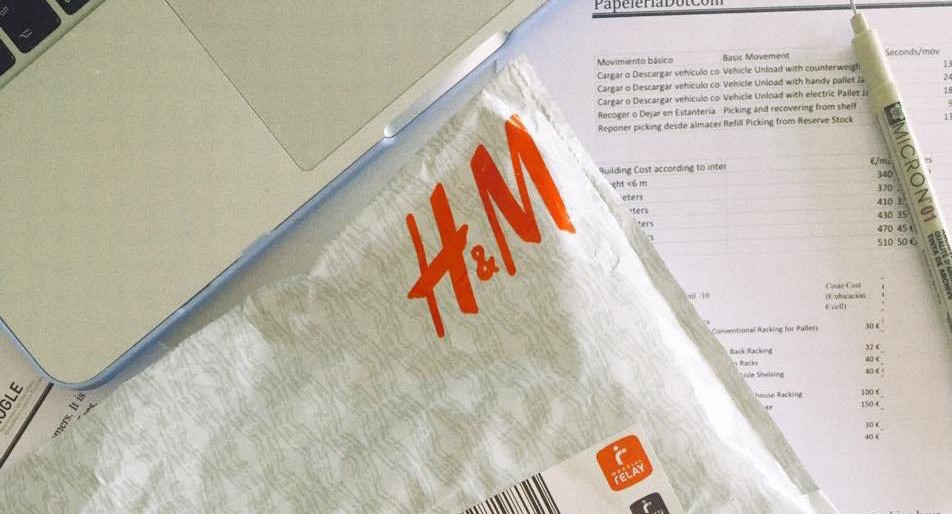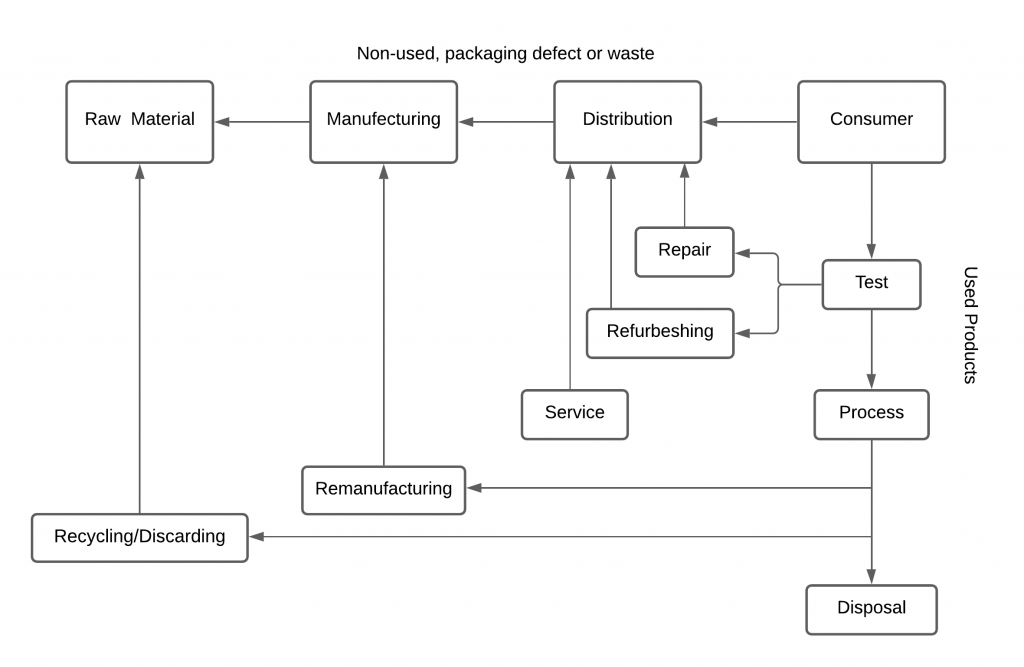Ever had to face a situation where you did not like a product or service and had to work out means to return it? Did you ever wonder what the company did with it upon return? Do they check it, test it, go back to check the issues in service?
Simply put, the process of implementing, controlling and planning the cost-effective flow of finished goods relating to movement of goods from the end-user back to the point of origin is known as reverse logistics. The concept came about for optimising the value of services or for proper disposal of these items.
Why Reverse Inventory Management
Any asset that has started its reverse journey from the customer back to the supplier is termed as ‘reverse inventory’ and the process of managing it is called ‘reverse inventory Management’. Reverse Inventory inter alia includes customer returns, defective stocks, goods for which insurance claims (relating to fire/floods) are pending, unclaimed goods at ports/logistic companies, stocks at end-of-life, recalled items, etc.

Functions of the Reverse Inventory Unit
The new challenges before companies are to optimally coordinate activities directed at meeting customer demands and to deal with the return of products. There is a need to find a proper mix of manufacturing original and refurbishing used products as well as of stock-keeping and disposal of returned items.
Need of the Hour
Reverse logistics is an area that has attracted ever-growing attention over the last few years owing to these reasons.
Environment
The management of the reverse movement of products and material is of considerable importance in many industries due to its impact on the economy and environment. With an e-commerce industry of $1.5 trillion in 2018, it was seen that 30% of the purchases were returned. The global waste management industry was around $300 billion and the recycling industry easily matched it with $200 billion.
Customer Delight
Growing market pressures such as online retail and customer expectations have further enhanced impact on this area of the supply chain. In order to stay competitive and profitable, it is crucial for the management to put in place a proper policy to deal with returns and their recovery.
The benefits of Reverse Logistics include additional revenue/ reduced costs, enhanced service, good brand image, customer retention and waste reduction.
Reverse Inventory Management
In reverse logistics, the actual inventory consists of both the traditional inventory items as well those relating to returned products. The value of returned products might be retrieved by undertaking repairs, refurbishment or recycling. However, some of these items may not be usable. Hence bifurcation will need to be done about these items to arrive at the correct value of the inventory.
Reverse Logistics Examples

- Apple, the manufacturer of i-phones and other products offers a buyback policy to enable consumers to upgrade their models at discounted rates. The Company uses parts from previous models in their new products enabling them to be cost-effective and environment-friendly.
- H&M accepts used clothing to create a recycled clothing line. This reverse logistics scheme allows all consumers to get involved with the brand.
- Dasani: they have implemented several easy ways to collect and recycle their used products by putting up ‘ Dasani Bottle Bins’ on school campuses across the United States. School children place their empty ‘ Dasani Bottles’ in the bins, which get collected and recycled by Dasani.
5 important Returns strategies to take care in an eCommerce Store
Types of Reverse Logistics
- Customer returns
- Return avoidance processes- carrying out improvisation
- Remanufacturing using old and new components
- Refurbishing
- Repackaging the used items/ returned products
- Unsold goods returned by the distributors/partners as per company policy
- Re-using/ recycling of goods at the end of their life
- Products refused by customers
- Leased/Rented Goods returned by customers on expiry of the lease term
- Returning goods to the producer for repairs and maintenance
How Does Reverse Logistics Work
Sequence of the reverse Logistics process is as under-
- Package and product retrieval from the customer or the warehouse
- Return shipping arrangement to be made to move the returned item to the point of origin
- Repairing/ Refurbishing/ fixing the returned item
- Screening and Inspection of the collected item to ensure safety and compliance of regulations
- Sorting/ processing and organising the product to make it ready for reshipment
- Remaining items to be identified for Recycling/Discarding
Reverse Logistics Process FLOW-CHART
Reverse logistics process involves returns, recalls, repairs, repackaging for restock/ resale, recycling and disposal.

Challenges for Companies in Reverse Logistics
Reverse logistics involves movement of the product in reverse direction. The goods move from the consumer back to the seller or manufacturer. Common problems in handling reverse logistics are:
- High reverse Logistic cost.
- Inability to understand the rationale of returns.
- Poor visibility of the product received.
- Inadequate labour resources to handle returns
Unchecked reverse logistics can disrupt the entire supply of workflow, eat into profits and leave sellers with inventories that can’t be sold. Both forward and reverse logistics need to be put in place properly to ensure more transparency. This will help track performance indicators across the entire life cycle of a product and will also improve reverse logistics and hence inventory management. Optimised performance indicators will lead to enhanced effectiveness, reduced cost & supply chain risks as well as improved customer service.
An optimised well planned and thoroughly implemented reverse logistics process enables the organisations to collect data on the reason for customer returns as well as other useful data such as common product defaults and life spans, etc. This data is crucial for unlocking maximum efficiencies, reducing costs and a greater profit margin. There is a need for retailers to put in place, liberal return policies for customers with a view to earn their trust, repeat business and new avenues for optimising reverse logistics.
 Start using ZapInventory today
Start using ZapInventory today

